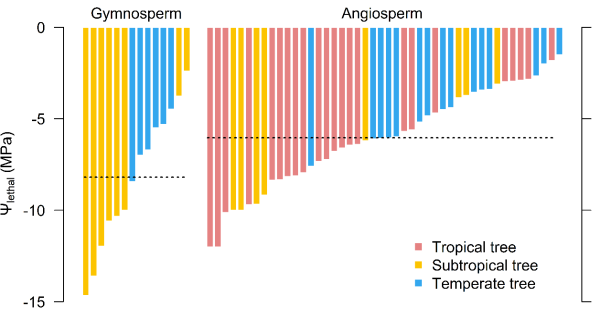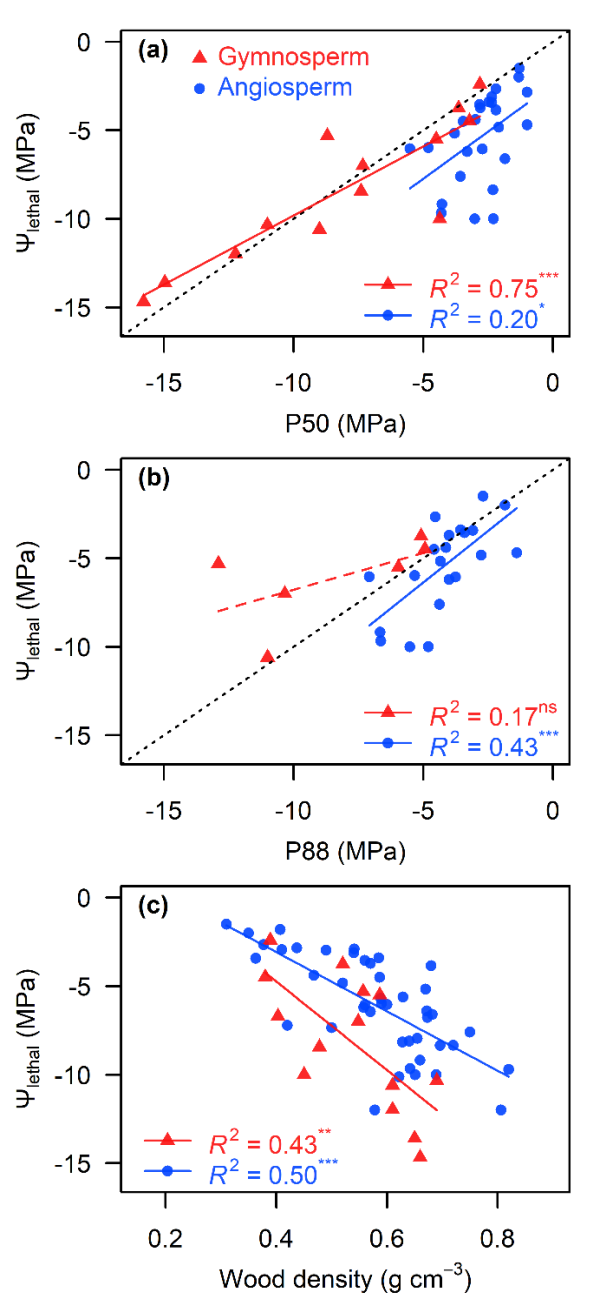SCBG researchers reveal the mortality threshold for trees under drought on a global scale
Many areas on the earth are becoming drier under global warming. Meanwhile, in the past decades, drought-induced forest die-off has been recorded on every forested biome, exerting great effects on biodiversity and ecosystem functions. However, a general understanding of forest vulnerability to drought is lacking, because of our limited understanding of the variation in mortality threshold, i.e., the lethal water potential (Ψlethal), of trees.
In a recent article published in New Phytologist entitled "Wood density predicts mortality threshold for diverse trees", a research group led by Professor YE Qing from South China Botanical Garden of Chinese Academy of Sciences revealed the variation in mortality threshold of trees on a global scale, providing new insights into understanding and predicting tree mortality in a changing climate.
The researchers found the Ψlethal ranged widely from -1.5 to -14.7 MPa across 59 tree species from three biomes (Figure 1). On average, the Ψlethal was significantly lower for gymnosperms than angiosperms. For angiosperms, trees from temperate forests had a significantly less negative Ψlethal than those from tropical or subtropical forests.

Figure 1 The distribution of lethal water potential (Ψlethal) for trees under drought. One bar represents one species. The black dotted lines show the mean value for gymnosperm and angiosperm species, respectively.
They also found that tree Ψlethal was close to P50 (water potential at 50% loss of xylem conductivity) for gymnosperms, while always lower than P50 and closer to P88 (water potential at 88% loss of xylem conductivity) for angiosperms. Besides, they found highly significant correlations between Ψlethal and wood density in both angiosperms and gymnosperms (Figure 2), suggesting that wood density (which is very easy to measure) may be a robust proxy for the threshold. As the determination of mortality threshold is particularly time- and labor-consuming (it takes months to years), the results provide a new approach in the study of forest vulnerability to drought on a global scale.

Figure 2 Relationships between lethal water potential (Ψlethal) and (a) P50, (b) P88, and (c) wood density. The black dotted lines in (a) and (b) indicate the 1:1 lines.
"Water potential is a robust and direct indicator of the water status of trees. The time that takes a tree to reach the lethal water potential determines the tree survival during droughts, therefore models that aim to predict tree mortality under drought must include this threshold as a critical parameter," said Dr. LIANG Xingyun, the first author of this study.
For further reading please refer to: https://doi.org/10.1111/nph.17117.
File Download: